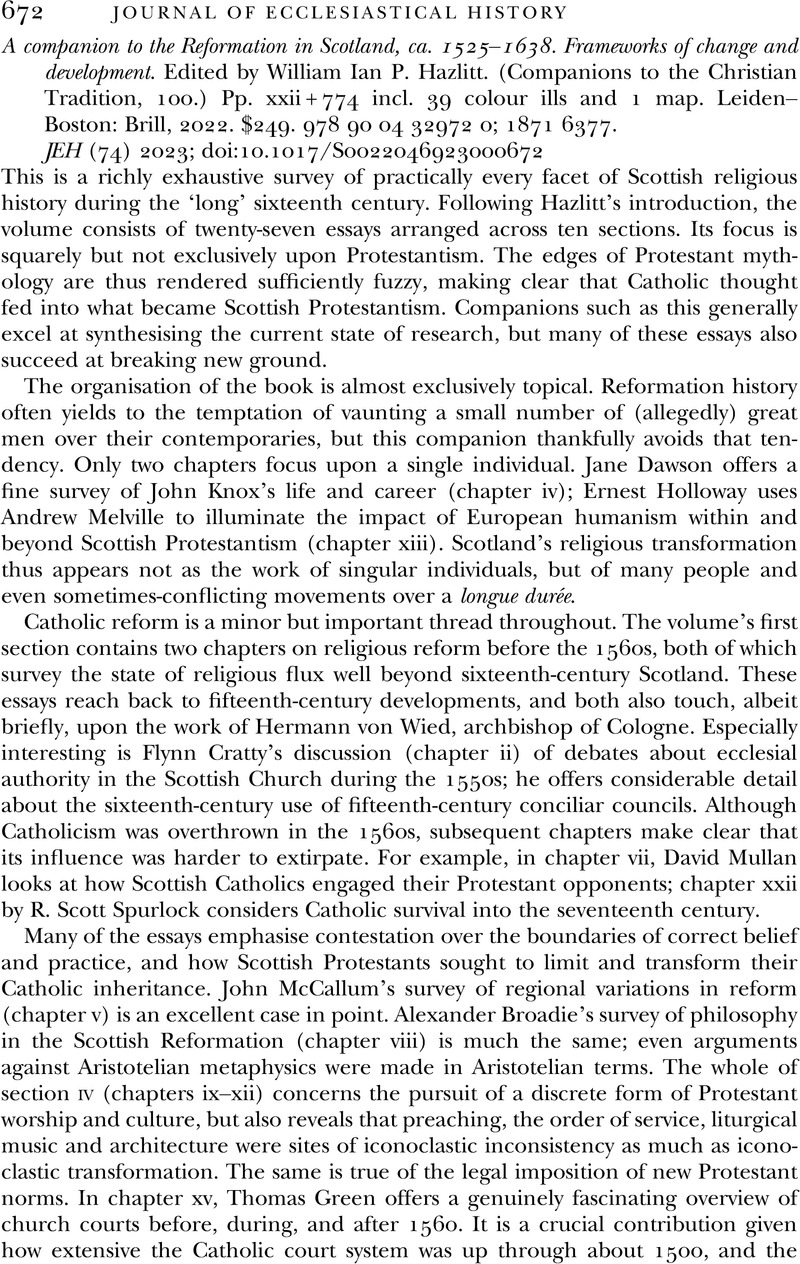No CrossRef data available.
Article contents
A companion to the Reformation in Scotland, ca. 1525–1638. Frameworks of change and development. Edited by William Ian P. Hazlitt. (Companions to the Christian Tradition, 100.) Pp. xxii + 774 incl. 39 colour ills and 1 map. Leiden–Boston: Brill, 2022. $249. 978 90 04 32972 0; 1871 6377.
Review products
A companion to the Reformation in Scotland, ca. 1525–1638. Frameworks of change and development. Edited by William Ian P. Hazlitt. (Companions to the Christian Tradition, 100.) Pp. xxii + 774 incl. 39 colour ills and 1 map. Leiden–Boston: Brill, 2022. $249. 978 90 04 32972 0; 1871 6377.
Published online by Cambridge University Press: 05 July 2023
Abstract
An abstract is not available for this content so a preview has been provided. Please use the Get access link above for information on how to access this content.

- Type
- Reviews
- Information
- Copyright
- Copyright © Cambridge University Press 2023



